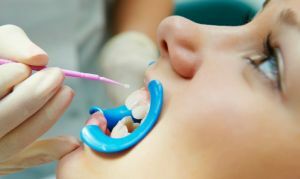 The development of bacteria and the release of acids during their life is the cause of caries. If the tooth enamel is prone to fracture, it must be further strengthened.
The development of bacteria and the release of acids during their life is the cause of caries. If the tooth enamel is prone to fracture, it must be further strengthened.
To reduce tooth sensitivity and prevent caries, a fluoridation procedure is prescribed.
Contents
- What is fluoridation - what are the features of the procedure?
- Mechanism of local fluoroprophylaxis
- Conditions for successful fluoridation
- Features of the procedure in childhood
- Depth has the value
- Usage of the conventional procedure
- All at once
- How deep fluorination is carried out
- Pluss much, minus one - the price
- About the harmfulness of a couple of words
- Saturate teeth with fluoride inhome conditions
- What people say
- How much will it cost?
- Mechanism of local fluoroprophylaxis
What is fluoridation - what are the features of the procedure?
The complex of measures for the treatment of enamel destruction, including saturation with fluoride ions, is called fluorination. If there is insufficient entry of elements such as fluoride and calcium into the body, the teeth become demineralized and the hardness of the tissues is lost.
They become loose and lose their strength, and these are ideal conditions for caries to flow.
Teeth fluoridation is a modern, painless technique that is prescribed for both children and adults. Special solutions are applied, microglobules of calcium fluoride are formed on the surface of the tooth, which replenish fluorine stores.
The main function of this type of fluoroprophylaxis is daily protection from the acidic medium that bacteria produce.
Indications for the procedure: 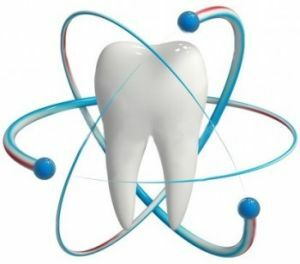
- refinement of the enamel;
- prophylaxis in the development of caries in the white spot stage;
- hyperesthesia( hypersensitivity);
- detrimental effects of chemical whitening;
- treatment of marginal periodontitis.
Contraindications to the procedure:
- individual intolerance or allergy to fluoride varnish constituents;
- epidemic fluorosis caused by prolonged use of water or food with a high content of fluoride.
Mechanism of local fluoroprophylaxis
The composition of the teeth of all living beings includes three varieties of apatites:
- carboxyapatites - easily worn and erased( in rodents);
- hydroxyapatite - medium permeability( in humans);
- ftorapatity - the strongest( in sharks).
The procedure ensures the interaction of fluorides with hydroxyapatite and the formation of fluorapatite. A stable compound reduces the permeability of enamel and increases its resistance.
To increase acid resistance, partial transfer of hydroxyapatite to hydroxyfluoropatite is sufficient.
Fluoride inhibits enzymes that break down carbohydrates, and inhibits the growth of microflora in the mouth. In addition, in childhood, when forming teeth, fluorides participate in the metabolism of the enamel protein. Resistance to caries increases.
Conditions for successful fluoridation
It is necessary to adhere to such rules:
- exogenous( external) drug contact with the tooth surface;
- time-keeping;
- the exclusion of ingestion or penetration of the drug into the body through the mucosa;
- increase in the intensity of diffusion of drug components in the tooth structure.
Features of the procedure in childhood
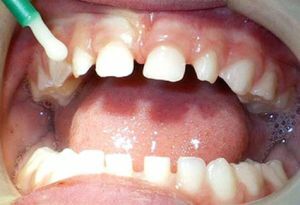 Baby baby teeth are often exposed to destruction due to a passion for sweets. Compliance with oral hygiene and proper diet is not always enough.
Baby baby teeth are often exposed to destruction due to a passion for sweets. Compliance with oral hygiene and proper diet is not always enough.
When fluorinating baby teeth, children at a small age of 1-3 years are given a gel separately for each tooth. Seniors undergo the procedure as well as adults around the mouth, this is completely harmless to the body.
Since children do not like frequent visits to the dentist, it's easier to make deep fluoridation. This method will allow to remineralize the tissues 1 time. The frequency of fluorine prophylaxis for adults and children - 1 time in six months.
Before installing braces, children are also advised to protect the enamel with fluoride-containing material.
Depth Matters
Deep and normal tooth fluoridation is used. When examining a patient, the doctor evaluates the complexity of the enamel state and determines the desired technique.
Usage of the usual
technique Simple fluoridation means regular maintenance of fluoride and replenishment of its stocks in the form of microcrystals. Individually prepared cast-spoon, which is filled with a material with a high content of fluoride.
Kapa with gel is applied to the teeth and aged for 10-20 minutes. The preventive course lasts 10-15 procedures. The first procedure is performed by a dentist, in the future, manipulations can be performed independently at home.
With this method it is possible to use the same cast to repeat the express method after a break.
There is another version of the usual fluoridation - coating the surface with fluoride varnish. The preparation contains a composition of resins, cedar balm, and sodium fluoride. Apply the nail polish to all teeth, then dry it with a stream of air. The course lasts 4 times a month.
The teeth form a thin, non-refractive light film that is imperceptible to others.
All at Once
Deep fluoridation was invented by the German Professor Knappswast. The variant is more reliable and effective than simple fluoridation. 
The method gives a deep migration of fluoride ions to the crystal lattice of the tooth. There they are transformed into a molecular state and deposited under the guise of complex conglomerates.
Specialists claim that calcium fluoride, included in solid tissues, is a potential protective barrier against caries.
This impregnation increases the strength of the teeth by 10 times, due to a higher concentration of ions. Unlike the usual, this method is quick and one-time. Dentists recommend repeating the procedure once a year.
How deep fluoridation is carried out
Before the process of deep fluoroprophylaxis, there is a need to clean the teeth from plaque and stones that can delay the penetration of fluoride. The interdental spaces are also thoroughly cleaned.
The procedure includes several stages:
- drying of teeth;
- application of enamel-sealant( stand for 2 minutes);
- air drying;
- staining with a solution of copper hydroxide and calcium hydroxide;
- mouth rinsing.
A chemical reaction occurs and a high concentration of ions in the solution provokes the precipitation of hydroxyapatite in the precipitate. The growth of fluoride microcrystals begins, which fill the microcracks of the enamel. In the depth of the pores the crystals are kept from 6 months.up to 2 years and continue to allocate fluoride ions.
Fluorapatite is formed, which ensures optimal restoration of the enamel structure. In parallel, copper has a permanent bactericidal action, which increases the anti-carious protection.
Pluses a lot, minus one - the price of
Successful fluoridation gives a person such bonuses:
- foci of the initial caries completely remineralized;
- protects not only enamel but also dentine;
- clinical efficacy gives a prolonged effect;
- fluoridation of the carious cavity before filling reduces the incidence of secondary caries.
The disadvantages of fluoridation can be attributed only the cost of the procedure. But the cost of fluoroprophylaxis is much lower than the cost of dental treatment.

Dental series before and after fluoridation - not so noticeable from the outside, but the result is
About the harmfulness of a couple of words
Fluoride ions( fluoride) are contained in the earth's crust, they can enter groundwater. Depending on the region of residence, a person receives fluoride mainly with drinking water.
Excess fluoride causes intoxication of the body. Fluorosis can cause serious problems in the teeth. But the procedure of fluoridation is absolutely harmless and can not cause fluorosis.
Chemicals of fluorine-containing material only benefit, returning the enamel property of hardness. Doctors advise to carry out fluoridation from childhood, and then problems with caries can be avoided. Strengthening of dental tissues can be done during pregnancy.
Saturating teeth with fluoride at home
Toothpaste with fluorine is also able to saturate the enamel locally with fluoride ions, but significantly less.
Application of such pastes has the ability to deal with deposits of stones and plaque.
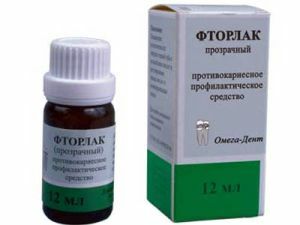 After spreading and spreading the paste, hold it in your mouth for 1 minute, then spit and rinse your mouth. Then fluorine is concentrated in saliva and oral cavity and saliva enzymes release fluoride for an hour.
After spreading and spreading the paste, hold it in your mouth for 1 minute, then spit and rinse your mouth. Then fluorine is concentrated in saliva and oral cavity and saliva enzymes release fluoride for an hour.
After using fluoride-containing pastes, it is advisable not to eat an hour.
Another method that can be used at home is the use of a cap with a fluorine-containing gel. A ten-day daily procedure takes only 15 minutes of time, and the effect helps to eliminate the possibility of caries development for at least a year.
Initiation of teeth at home with fluoride varnish:
What people say
Teeth fluoridation is gaining popularity, which is confirmed by numerous reviews.
After fluoridation the sensitivity of the teeth has decreased. The reaction to the winter cold has completely passed, and there is not even a glimpse of apples.
Alina, 33
The made procedure of remineralization by means of fluorination really gives positive results. Earlier, my child formed caries in the interdental space, now we do not remember filling up for several years.
Karina, 24
How much does it cost?
The cost depends on the technology used and the desired effect: 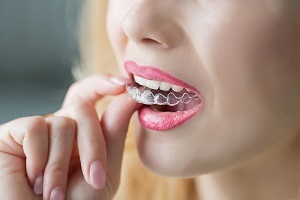
- The application of fluoride varnish in different clinics will have to spend 50 to 400 rubles per tooth.
- Deep fluoridation is the most expensive, but a single treatment gives a lasting effect. The price of the technology is from 120 to 600 rubles. But do not forget that the prevention of disease costs much less than treatment.
Efficiency varies depending on the method, the fluoride carrier, its clearance, the concentration of active ions, the duration and the frequency of application. Dental care and preventive measures to prevent caries are an integral part of the life of a successful person.
